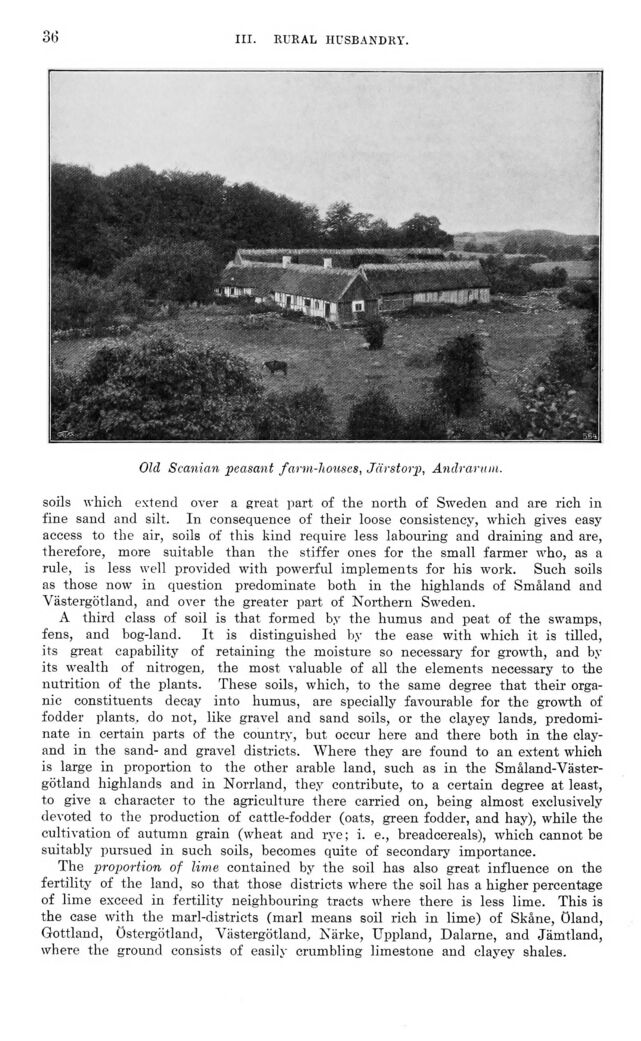
Full resolution (JPEG) - On this page / på denna sida - III. Rural Husbandry. Introd. by H. Juhlin Dannfelt - 1. Agriculture. By H. Juhlin Dannfelt

<< prev. page << föreg. sida << >> nästa sida >> next page >>
Below is the raw OCR text
from the above scanned image.
Do you see an error? Proofread the page now!
Här nedan syns maskintolkade texten från faksimilbilden ovan.
Ser du något fel? Korrekturläs sidan nu!
This page has never been proofread. / Denna sida har aldrig korrekturlästs.
50 III. RURAL HUSBANDRY.
Old Scanian peasant farm-houses, Järstorp, Andrarum.
soils which extend over a great part of the north of Sweden and are rich in
fine sand and silt. In consequence of their loose consistency, which gives easy
access to the air, soils of this kind require less labouring and draining and are,
therefore, more suitable than the stiffer ones for the small farmer who, as a
rule, is less well provided with powerful implements for his work. Such soils
as those now in question predominate both in the highlands of Småland and
Västergötland, and over the greater part of Northern Sweden.
A third class of soil is that formed by the humus and peat of the swamps,
fens, and bog-land. It is distinguished by the ease with which it is tilled,
its great capability of retaining the moisture so necessary for growth, and by
its wealth of nitrogen, the most valuable of all the elements necessary to the
nutrition of the plants. These soils, which, to the same degree that their
organic constituents decay into humus, are specially favourable for the growth of
fodder plants, do not, like gravel and sand soils, or the clayey lands,
predominate in certain parts of the country, but occur here and there both in the
clay-and in the sand- and gravel districts. Where they are found to an extent which
is large in proportion to the other arable land, such as in the
Småland-Västergötland highlands and in Norrland, they contribute, to a certain degree at least,
to give a character to the agriculture there carried on, being almost exclusively
devoted to the production of cattle-fodder (oats, green fodder, and hay), while the
cultivation of autumn grain (wheat and rye; i. e., breadcereals), which cannot be
suitably pursued in such soils, becomes quite of secondary importance.
The proportion of lime contained by the soil has also great influence on the
fertility of the land, so that those districts where the soil has a higher percentage
of lime exceed in fertility neighbouring tracts where there is less lime. This is
the case with the marl-districts (marl means soil rich in lime) of Skåne, Öland,
Gottland, Östergötland, Västergötland, Närke, Uppland, Dalarne, and Jämtland,
where the ground consists of easily crumbling limestone and clayey shales.
<< prev. page << föreg. sida << >> nästa sida >> next page >>